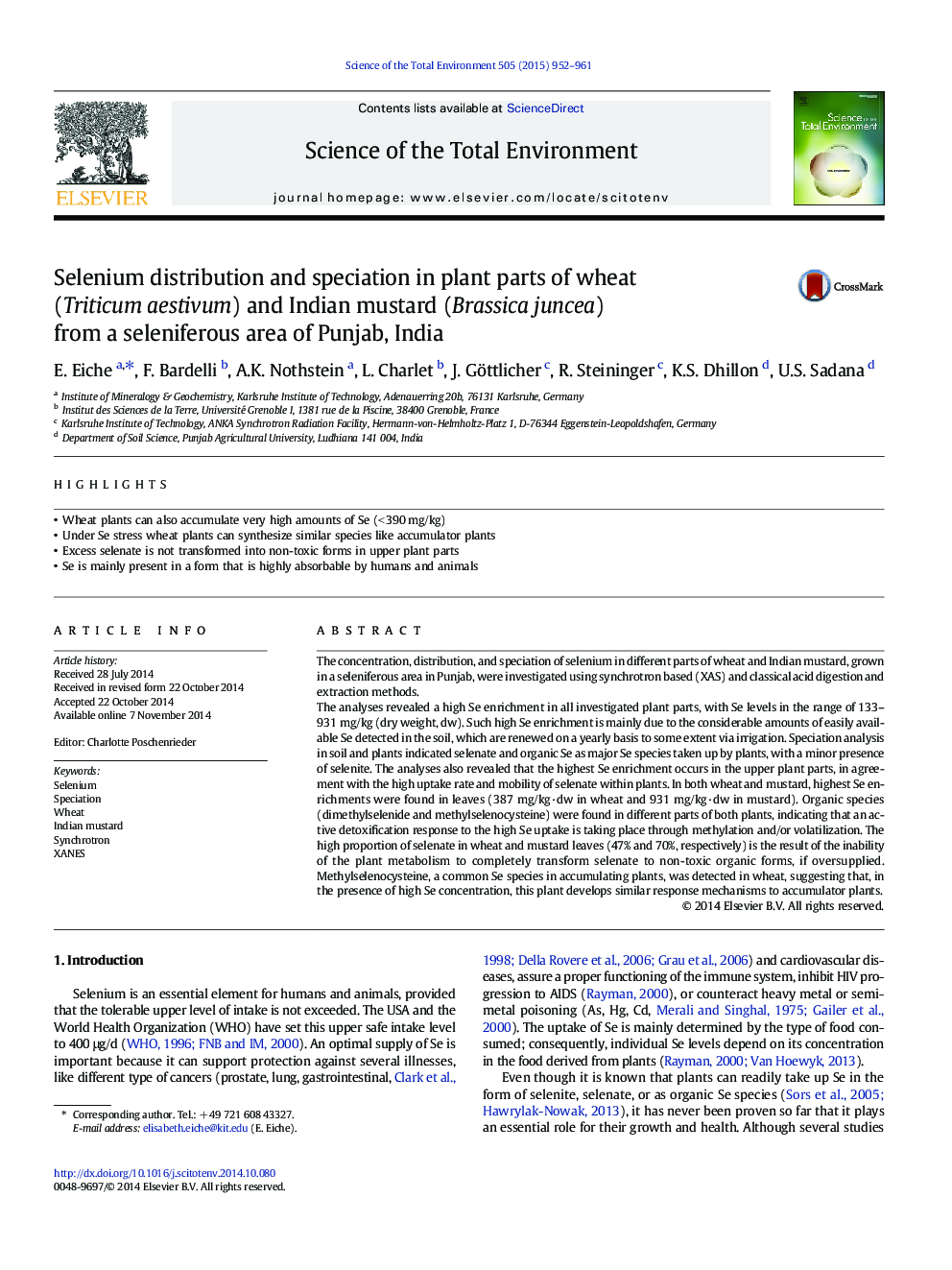| Article ID | Journal | Published Year | Pages | File Type |
|---|---|---|---|---|
| 6328218 | Science of The Total Environment | 2015 | 10 Pages |
Abstract
The analyses revealed a high Se enrichment in all investigated plant parts, with Se levels in the range of 133-931 mg/kg (dry weight, dw). Such high Se enrichment is mainly due to the considerable amounts of easily available Se detected in the soil, which are renewed on a yearly basis to some extent via irrigation. Speciation analysis in soil and plants indicated selenate and organic Se as major Se species taken up by plants, with a minor presence of selenite. The analyses also revealed that the highest Se enrichment occurs in the upper plant parts, in agreement with the high uptake rate and mobility of selenate within plants. In both wheat and mustard, highest Se enrichments were found in leaves (387 mg/kg·dw in wheat and 931 mg/kg·dw in mustard). Organic species (dimethylselenide and methylselenocysteine) were found in different parts of both plants, indicating that an active detoxification response to the high Se uptake is taking place through methylation and/or volatilization. The high proportion of selenate in wheat and mustard leaves (47% and 70%, respectively) is the result of the inability of the plant metabolism to completely transform selenate to non-toxic organic forms, if oversupplied. Methylselenocysteine, a common Se species in accumulating plants, was detected in wheat, suggesting that, in the presence of high Se concentration, this plant develops similar response mechanisms to accumulator plants.
Related Topics
Life Sciences
Environmental Science
Environmental Chemistry
Authors
E. Eiche, F. Bardelli, A.K. Nothstein, L. Charlet, J. Göttlicher, R. Steininger, K.S. Dhillon, U.S. Sadana,
